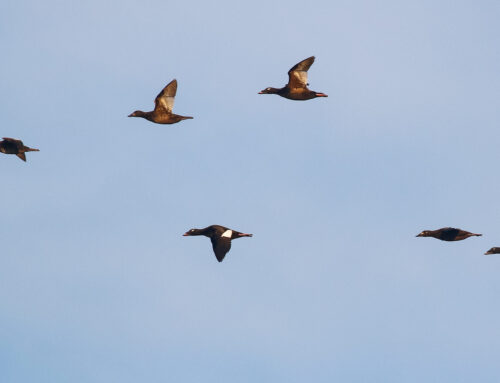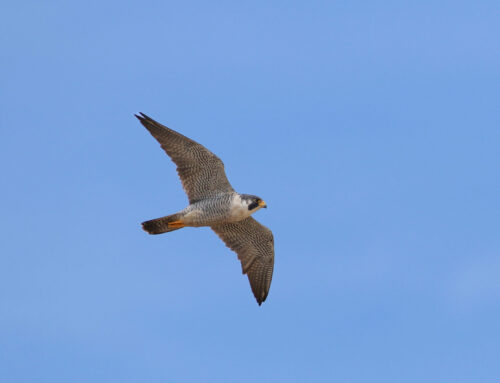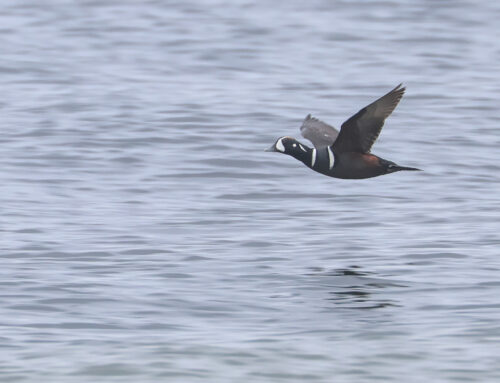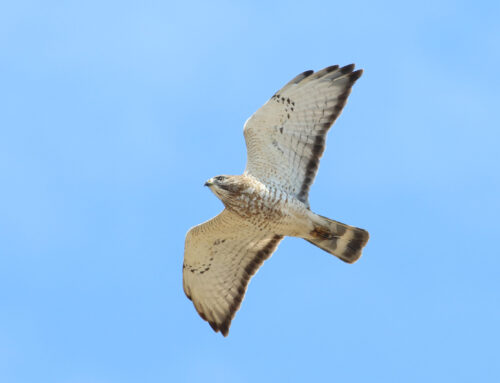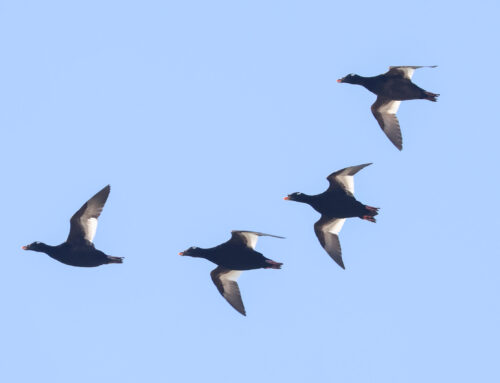To the Inuit of Nunavut, the arrival of the Long-tailed Duck (or in their language, aggiarjuk) heralds spring’s coming. Traditional songs exalt the event–”When we have survived the worst and the future looks promising, the Long-tailed Ducks have now returned. As they return, they are full of joyous spirit.”
At Whitefish Point, where one spends most hours outside, in careful observation–and at the mercy–of the world around, seasons take the form of the birds that accompany them. Fall starts when it still, by appearances, seems summer–except for the adult shorebirds, southbound. We then move to the season of Red-necked Grebe, and rapidly travel through the seasons of teal, of Aythya, of scoters…
The Great Lakes shares at least some of its Long-tails with the Nunavut Inuit. Wintering birds tagged on Lake Ontario have been tracked north to Hudson Bay, where they breed, then molt. When molt has finished, the ducks return south, flying hundreds of kilometers in a go. One of these legs takes Long-tails–at peak flight by thousands per day–past Whitefish Point. But while the birds signal spring to the Inuit, for us they usher autumn’s end.
Our season of Long-tailed Duck is cold and gusty. Increasingly frigid air meets a warm(er) Superior, adding a dimension to the atmosphere–a dimension to the Count. The Long-tails prefer to fly in this distortion zone, where immense flocks shimmer like an apparition, low over the chop. Even under these conditions, identification is no challenge. The challenge instead comes from attaching a number to a flock of several hundred where birds are constantly swapping position. Long-tail flocks crest and fall, bunch and pull apart; they serpentine, twist up into double helixes, scatter into the ether… as the Long-tailed Duck flies is a completely different concept than as the crow flies. But though their flight is absolutely indirect, it is still something beautiful. Even on days when the heat shimmer is so extreme it is difficult to make out the markings, watching the symmetry of thousands of Long-tailed Ducks fly across my vantage is a thrill that staves off the chill.
The first day I counted more than 1,000 Long-tails (October 16) was the first day I put on my insulated bib overalls. The height of the peak, just now tapering, has produced about 9,000 birds in three days. It is within the past three days that I have donned my last line of defense against the elements–a puffy jacket so large it might as well be a fat suit. The season of Long-tailed Duck for us carries a different weight than does the season of Long-tailed Duck in Hudson Bay. On their breeding grounds, it’s said the Long-tails appear so full of joy that joy spreads to those who see them. While the seasons of Long-tailed Ducks signify different things, I don’t think the feeling they bring changes.
–Alison Vilag, WPBO Waterbird Counter

Strands of Long-tailed Ducks twisting across the horizon. Alison Vilag photo.


